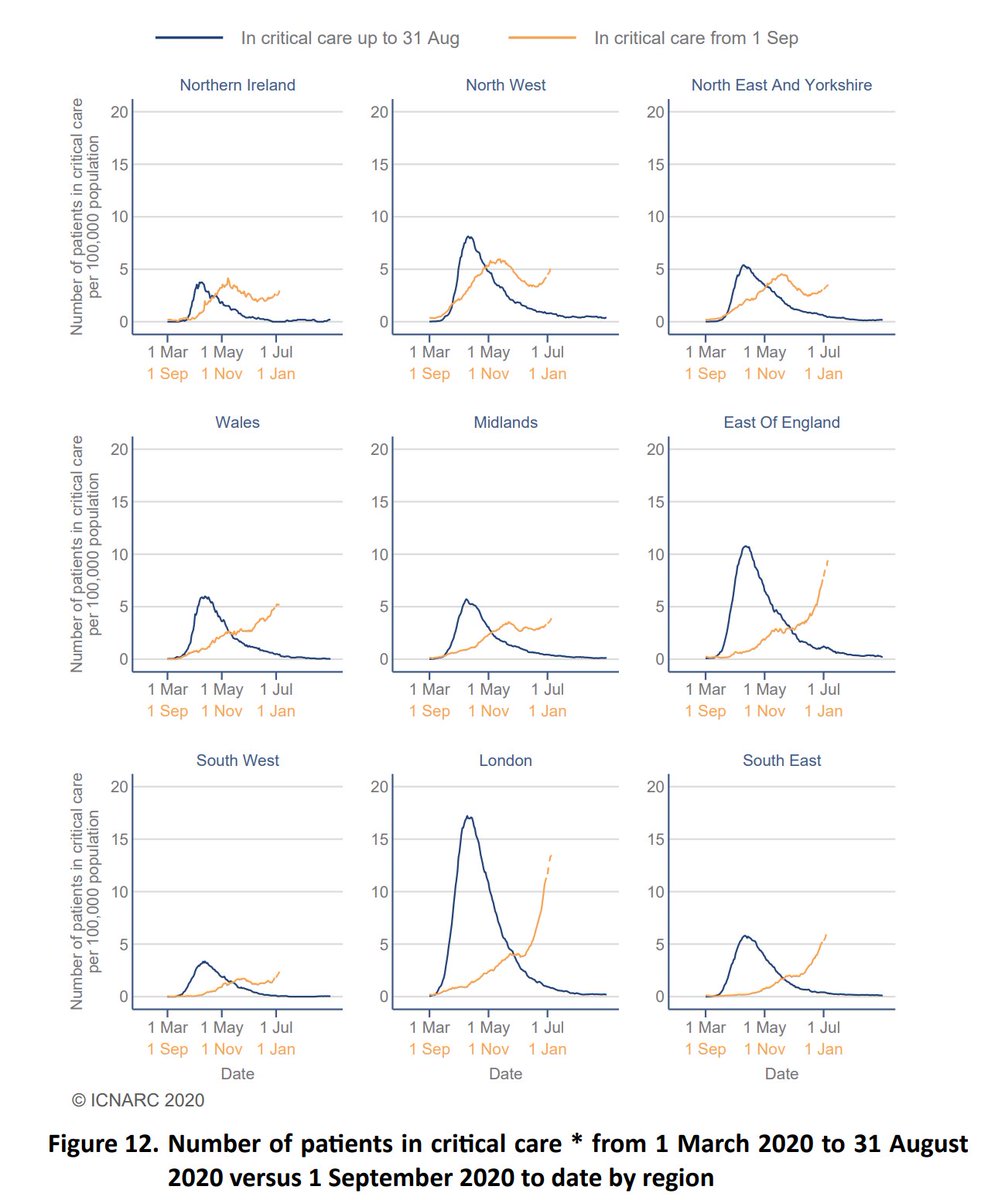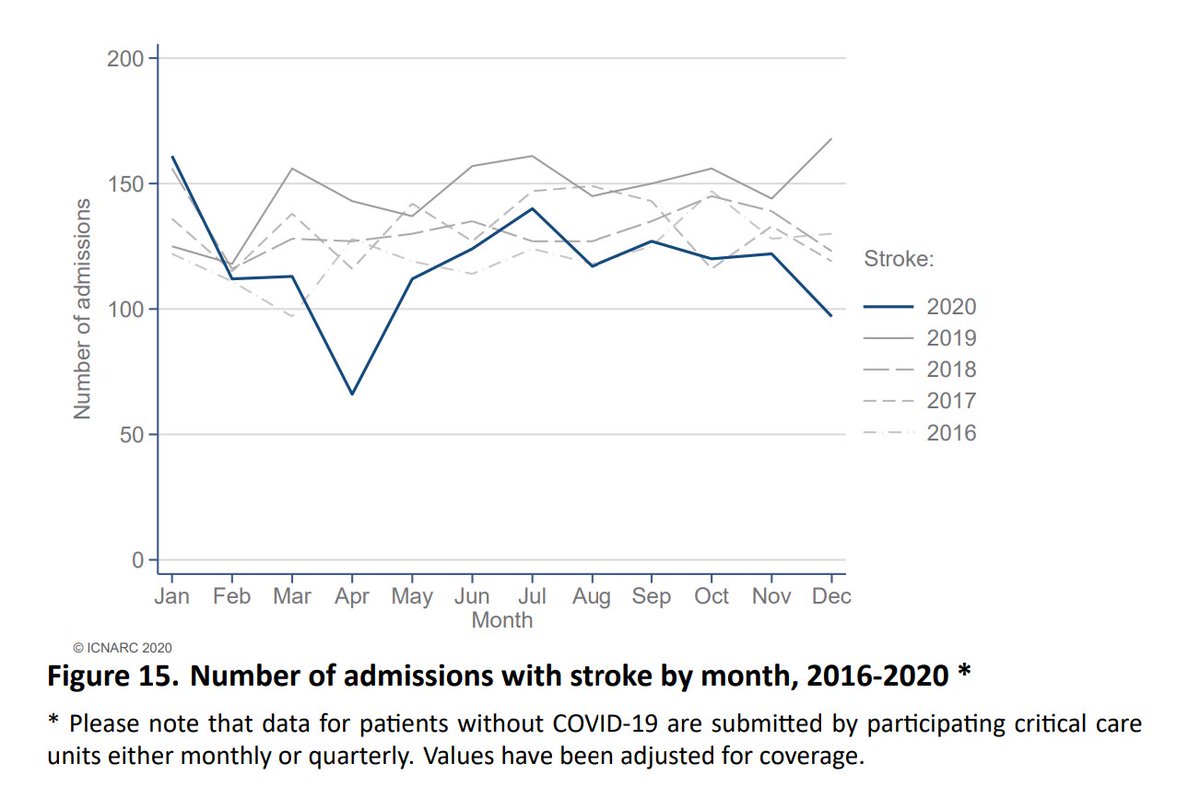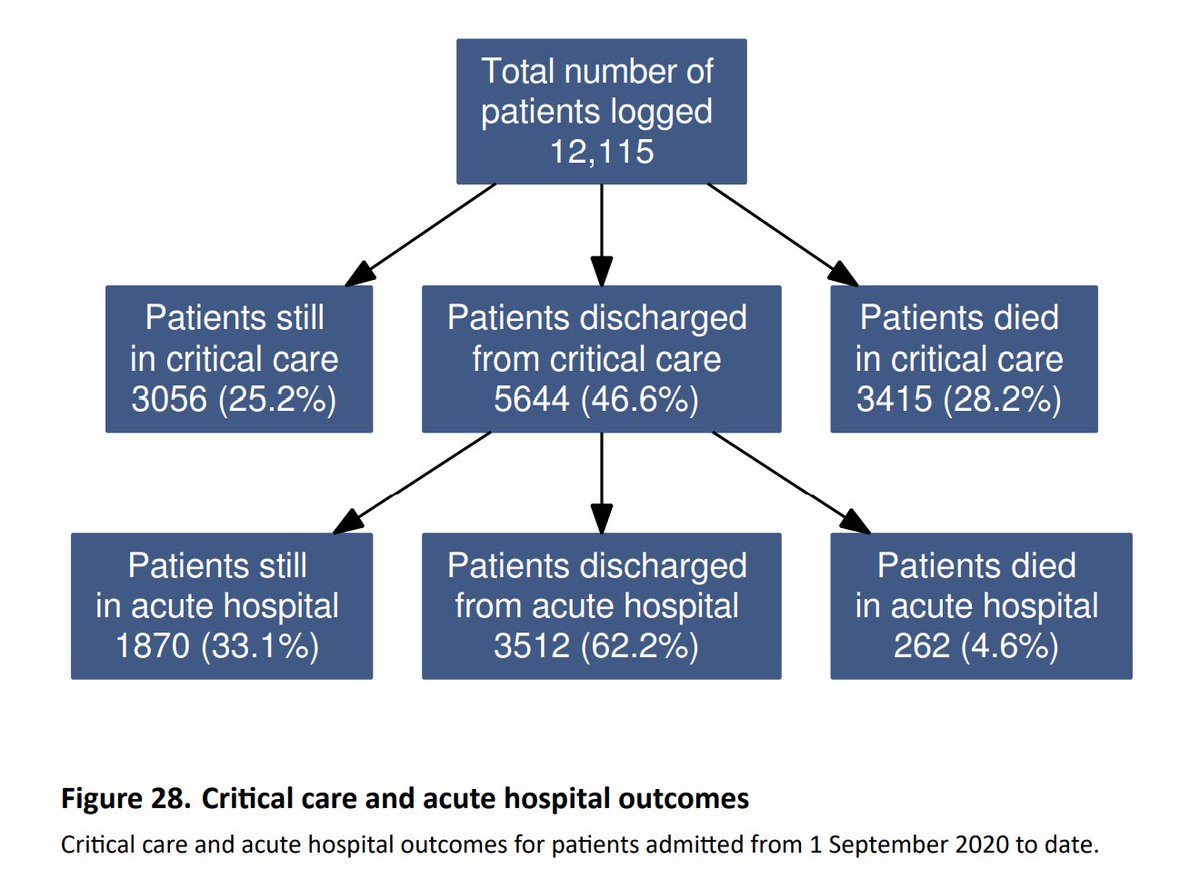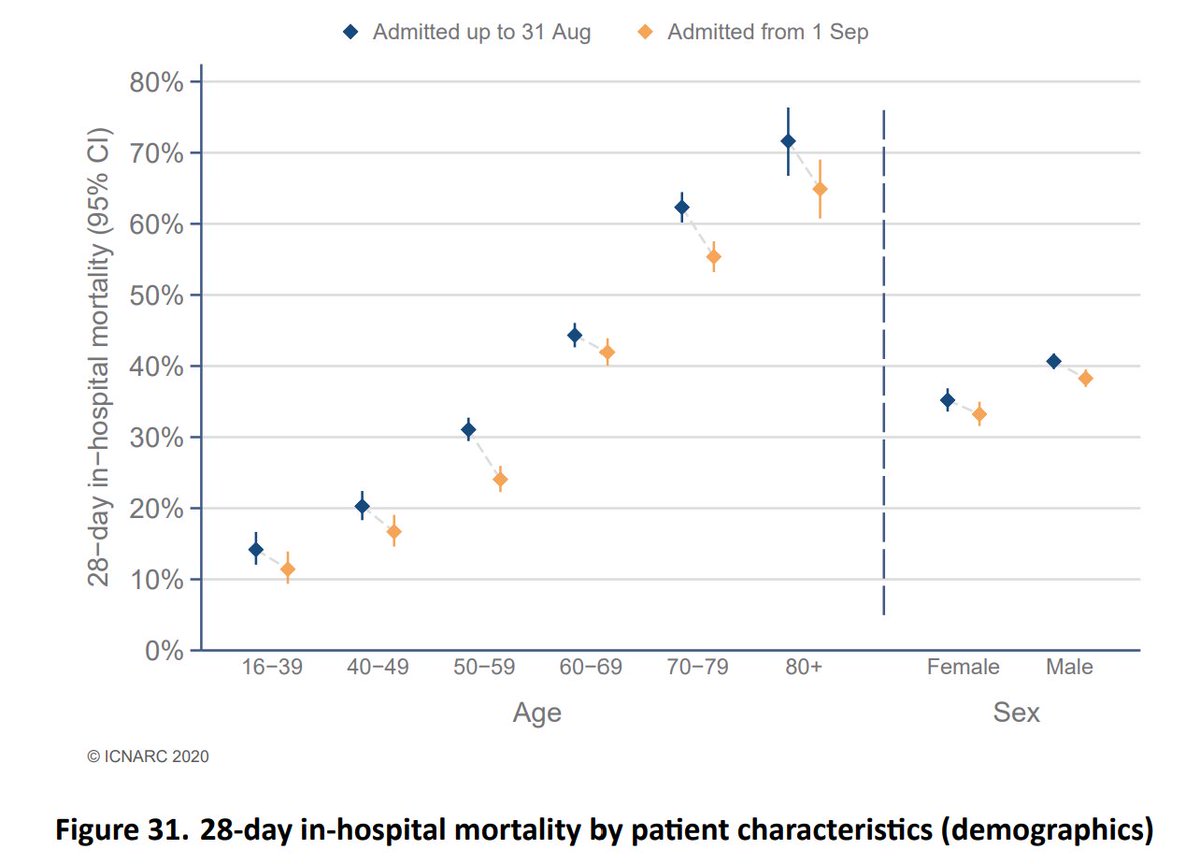The latest update from @ICNARC on COVID intensive care activity has been published, summarised here on behalf of @COVID19Actuary. We've now passed a sobering milestone with more admissions (12,115) in the second wave than the first (10,935), with 2,938 in the last 14 days. 1/18
Here's the recent geographical split, and the emphasis on London and surrounding regions is as clear as it is not surprising. Only the East and London have yet to pass their first wave total, and at current rates, they will do so in the next few days. This data is to 7 Jan. 2/18
The recent upsurge is very clear here, after a slight dip following the November lockdown. Whilst the early phase of the second wave was much less severe than in March, the recent increase is not dissimilar, and from a base of a much higher level of activity. 3/18
London, the East, and the SE, are now at or approaching the peak level of admissions (per head of population) as was seen in the first wave. In March the peak in London was much higher than in the rest of the population, making that particular comparison even more stark. 4/18
Here's another view that shows how London is faring worse currently. A rapid rise in cumulative admissions has quickly taken its total above the North West. The hypothesis that faring worse in the first wave would lead to a more benign second wave doesn't appear to hold. 5/18
Two views of numbers in ICU at any point in time next. The message is the same though, both in terms of the national picture and the regional split, with London fast approaching the peak situation in April, and many other areas close too. 6/18
The next few slides now have Dec data added. The total in ICU beds is well above any recent previous years, despite some saying that this is "just a normal winter". It's clearly not from this view. We are still seeing non-elective admis'ns well down though - a clear concern. 7/18
Heart attack and stroke admissions have fallen even further. It's implausible to think that these have been misclassified as COVID as the symptoms are so clear, particularly in an ICU setting. So the concern is that people are failing to present, as happened in April. 8/18
In contrast the next two could be good news. Fewer trauma admissions are likely to be related to reduced activity, particularly slips and falls by the elderly. Continuing low self-harm figures don't support the escalation of severe MH issues some have hypothesised. 9/18
Also updated for Dec, we can see COVID well in excess of normal pneumonia admissions, and are running at 12 x even the highest recent flu year. Flu has all but disappeared this year, but the offset is minimal (400 against 5,000). 10/18
Some patient characteristics next. The average age at admission is around 61. This is lower than general hospital admissions for COVID, but nevertheless 44% are under 60. The ethnic analysis shows that those of Asian ethnicity are disproportionately represented. 11/18
Those from more deprived areas are more likely to require ICU treatment, as are those with a significantly raised BMI. Note that some of these characteristics are likely to have a degree of correlation. 12/18
Only 1 in 8 of those admitted needed assistance with daily activities, and only 1 in 9 have severe comorbidities, contradicting the narrative that only those in poor health are seriously impacted by the virus. 13/18
Two graphs that indicate the stress that the NHS system is now under relate to the number of patients being transferred between hospitals. This is increasing rapidly and is now close to April levels. 14/18
Turning to outcomes, around 30% of those admitted to ICU have died, a similar proportion have been discharged from hospital, and around 40% are still in hospital, most in critical care. Another measure is survival to 28 days, which we cover next. 15/18
This measure shows a similar 28 day survival curve to the first wave, with 36% not making it through the first month. That's a sobering statistic given those entering ICU are considered to be those with the best chance of benefiting from the intensive treatment available. 16/18
A slight contrast to finish on. The first graph shows that outcomes by each age group have improved (the second wave has a slightly older age profile). But in contrast, there appears to have a deterioration since the second wave started, as volumes have increased again. 17/18
Finally, my heartfelt thanks to all of those, not only in ICU settings but across all of our health service, for your ongoing service, both to patient care and society more generally. Your commitment to your work is outstanding. Thank you! 18/18
Report: https://www.icnarc.org/Our-Audit/Audits/Cmp/Reports
Report: https://www.icnarc.org/Our-Audit/Audits/Cmp/Reports

 Read on Twitter
Read on Twitter


























